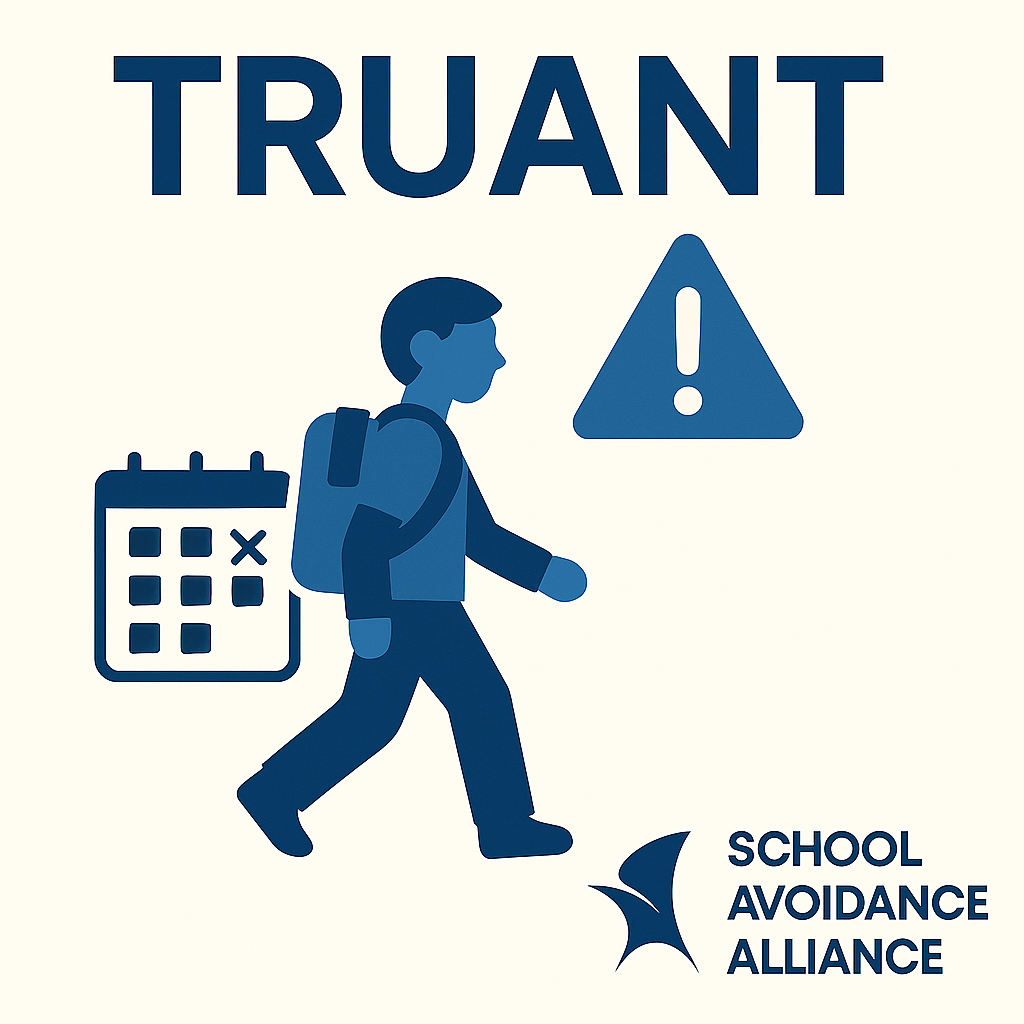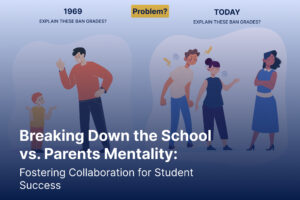In the landscape of education, one term frequently discussed—but often misunderstood—is truant. School absenteeism, especially without valid reasons, can have severe academic, social, and legal consequences. Whether you’re a parent, educator, or student, understanding what it means to be truant, the truancy definition, and how it affects education is crucial. This article will explain the concept in detail, discuss the consequences of skipping school, explore truancy laws by state, and offer practical solutions for preventing school dropouts.
Truancy Definition: What Does “Truant” Mean?
Let’s begin by exploring a foundational but often misunderstood question: What is a truant student?
In its simplest form, a truant is a student who deliberately stays away from school without permission or a valid excuse. It is important to note that not all absences are considered truancy. For example, missing school due to illness, a family emergency, or a religious observance—provided it is properly reported—is typically classified as an excused absence. Truancy applies only to unauthorized absences, and especially when they are repeated or habitual.
Formal Truancy Definition
Though the specifics vary by jurisdiction, the general truancy definition used by educators and legal authorities typically includes these key elements:
“Truancy is the act of being absent from school without a valid or lawful excuse, particularly when such absences are chronic or ongoing.”
This means that one unexcused absence doesn’t automatically label a student as truant. Instead, truancy refers to a pattern or tendency of skipping school without proper authorization or explanation.
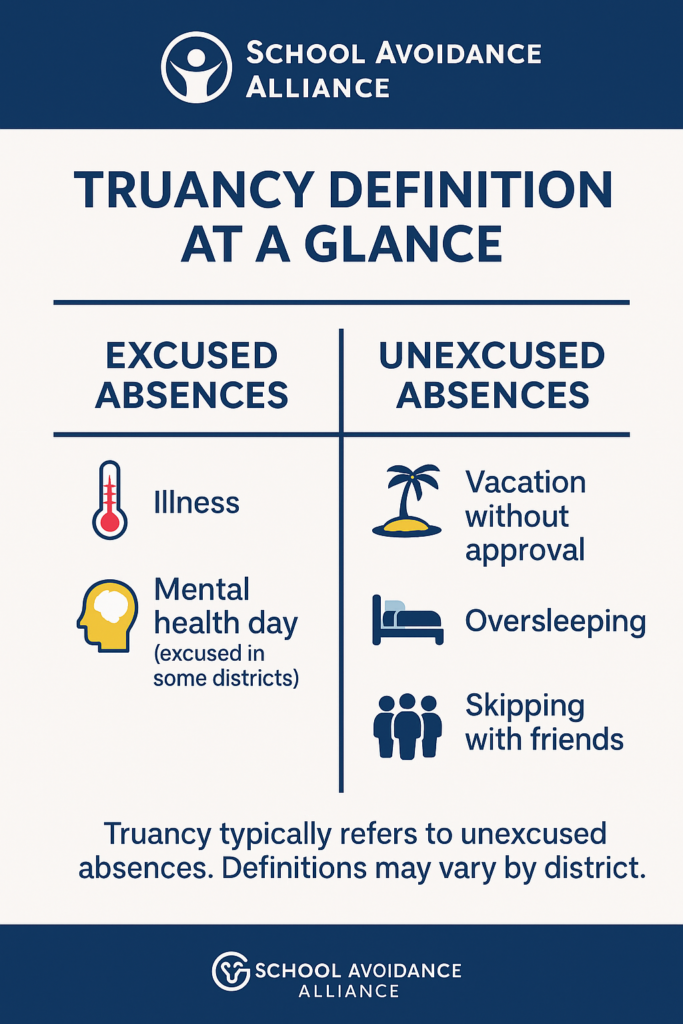
Excused vs. Unexcused Absences
To better understand who is considered truant, we must first differentiate between the two types of absences:
- Excused Absences
These are permitted by the school under formal guidelines and typically include:- Illness with a doctor’s note
- Family emergencies (e.g., death in the family)
- Court appointments
- Religious holidays
- Mental health days (in some jurisdictions)
- Unexcused Absences
These are instances when a student misses school for reasons not accepted by the school, such as:- Skipping class to hang out with friends
- Oversleeping or missing the bus
- Taking a vacation without school approval
- Faking illness without documentation
When unexcused absences accumulate beyond a certain threshold, students may be flagged as habitually or chronically truant.
What Is a Truant Student?
A truant student is typically one who:
- Fails to attend school regularly
- Has a number of unexcused absences, as defined by local or state guidelines
- May show signs of disengagement from school or academic responsibilities
For instance, in California, a student is considered truant after three unexcused absences or instances of being late more than 30 minutes. In Illinois, the threshold is five percent of the school year missed without valid excuses. These distinctions are important for educators, parents, and even courts when evaluating a child’s attendance record.
Chronic Truancy vs. Occasional Truancy
Another key distinction is the frequency and pattern of absenteeism:
- Occasional Truancy: May involve a few scattered unexcused absences throughout the school year. Schools typically respond with warnings or parental contact.
- Chronic Truancy: Indicates a pattern of repeated, unexcused absences, often triggering interventions such as:
- Parent-teacher conferences
- Attendance contracts
- Involvement of school counselors or social workers
- Legal consequences, such as truancy court or fines
- Parent-teacher conferences
The U.S. Department of Education defines chronic absenteeism (which includes both excused and unexcused absences) as missing 15 or more days of school in a year. While not always synonymous with truancy, chronic absenteeism often overlaps with it and can be a red flag for larger issues.
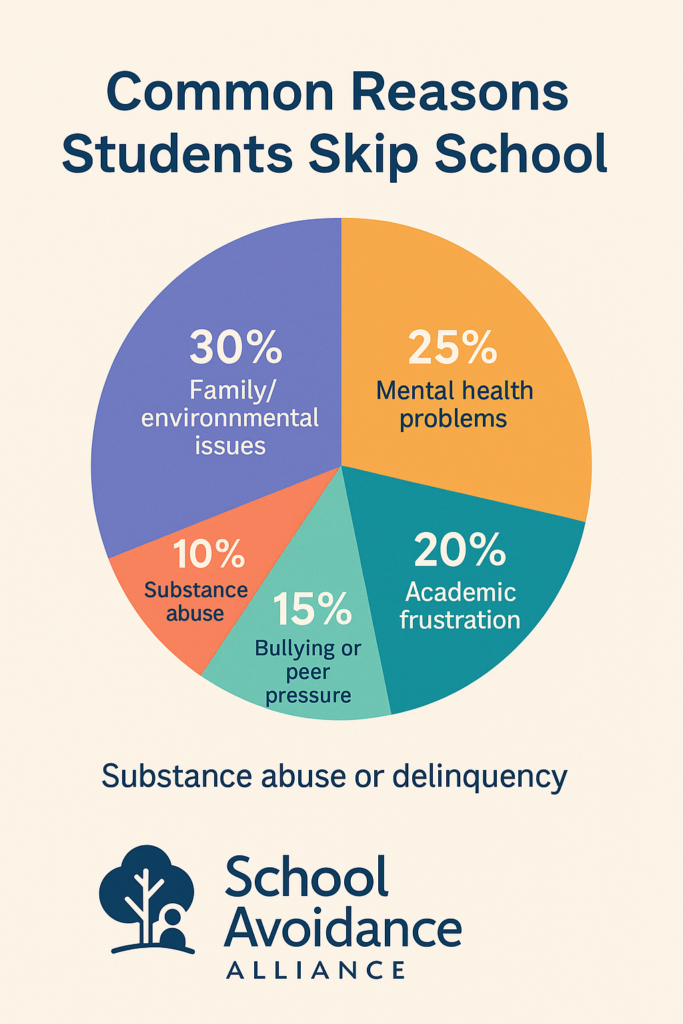
Educational and Legal Implications of Being Truant
When a student is identified as truant, the implications extend beyond missed lessons. It becomes an educational, behavioral, and sometimes legal issue.
- Educationally, truant students fall behind on coursework, miss critical concepts, and tend to score lower on assessments.
- Socially, frequent absences can isolate students from their peers and support networks.
- Legally, repeated unexcused absences can lead to:
- Mandatory meetings with school officials
- Court referrals for the student or parent
- Fines or community service requirements
- In extreme cases, juvenile detention or child protective services involvement
- Mandatory meetings with school officials
Why Does the Definition of Truant Matter?
Understanding the precise definition of truancy is essential for:
- Identifying students who are at risk
- Implementing early intervention strategies
- Avoiding unfair disciplinary action for excused absences
- Supporting struggling families before legal penalties are applied
It also helps educators and administrators design targeted responses rather than applying a one-size-fits-all punishment, which may worsen the student’s disengagement from school.
Why Students Skip School: Root Causes of Truancy
Understanding why students skip school is crucial to addressing the problem. Truancy rarely stems from laziness or rebellion alone; it’s usually a symptom of deeper issues. Common factors include:
1. Family Environment
Students from unstable homes—marked by poverty, substance abuse, or neglect—are more likely to become truant. Educational neglect, where guardians fail to ensure a child’s education, is a serious contributing factor.
2. Mental Health Challenges
Depression, anxiety, ADHD, and other conditions can make school feel overwhelming. Without mental health support, affected students may avoid school altogether.
3. Bullying and Peer Pressure
A hostile or unsafe school environment leads many students to choose absence over confrontation. Bullying remains one of the leading causes of school absenteeism.
4. Academic Frustration
Struggling to keep up with coursework may discourage students. Feeling like a failure can quickly lead to disconnection from school life.
5. Substance Abuse and Delinquency
Older students engaged in risky behaviors often avoid school to pursue activities that further alienate them from the educational system.
Why It Works: Supports the “Why Students Skip School” section with hard data and visually communicates key causes.
Skipping School Consequences: What Happens to Truant Students?
The consequences of skipping school are far-reaching. Truancy affects not just academic performance, but also long-term success and societal well-being.
Academic Impact
- Lower grades
- Missed learning milestones
- Increased dropout risk
Social Impact
- Peer alienation
- Reduced social development
- Poor self-esteem
Legal Impact
In many regions, parents of truant children may face legal penalties including fines, mandated parenting classes, or even jail time.
Long-Term Consequences
- Limited job opportunities
- Lower lifetime earnings
- Increased risk of poverty
- Greater likelihood of criminal activity
The longer a student remains disengaged from school, the harder it becomes to reintegrate. That’s why early intervention is so vital.
Truancy Laws by State: How the U.S. Handles School Absenteeism
Each state in the U.S. enforces its own version of truancy laws by state, but there are some commonalities. Most laws define a truant student based on the number of unexcused absences within a given time frame.
Here are examples of how different states define and handle truancy:
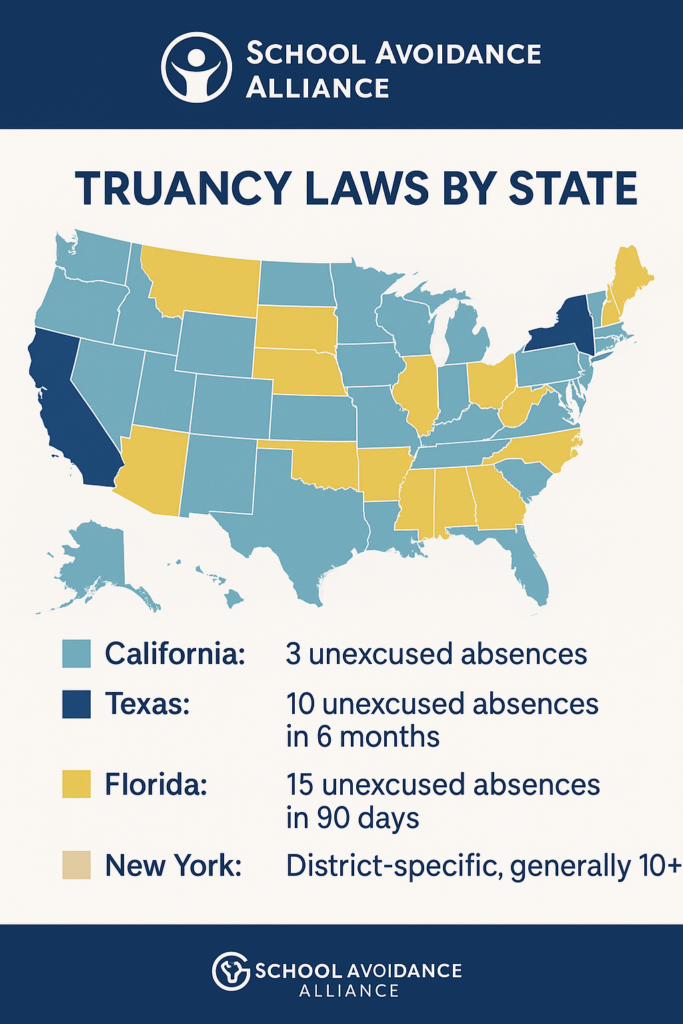
Most states have moved toward restorative justice models that prioritize intervention over punishment. These might include counseling, mentoring, and social services to support at-risk students and families.
Chronic Absenteeism vs. Truancy: What’s the Difference?
Though often used interchangeably, chronic absenteeism and truancy are not the same.
- Truancy typically refers to unexcused
- Chronic absenteeism includes both excused and unexcused absences and is often defined as missing 10% or more of the school year.
Chronic absenteeism can occur for valid reasons, such as long-term illness or family crises, but it still poses academic risks. Schools must address both issues with tailored approaches.
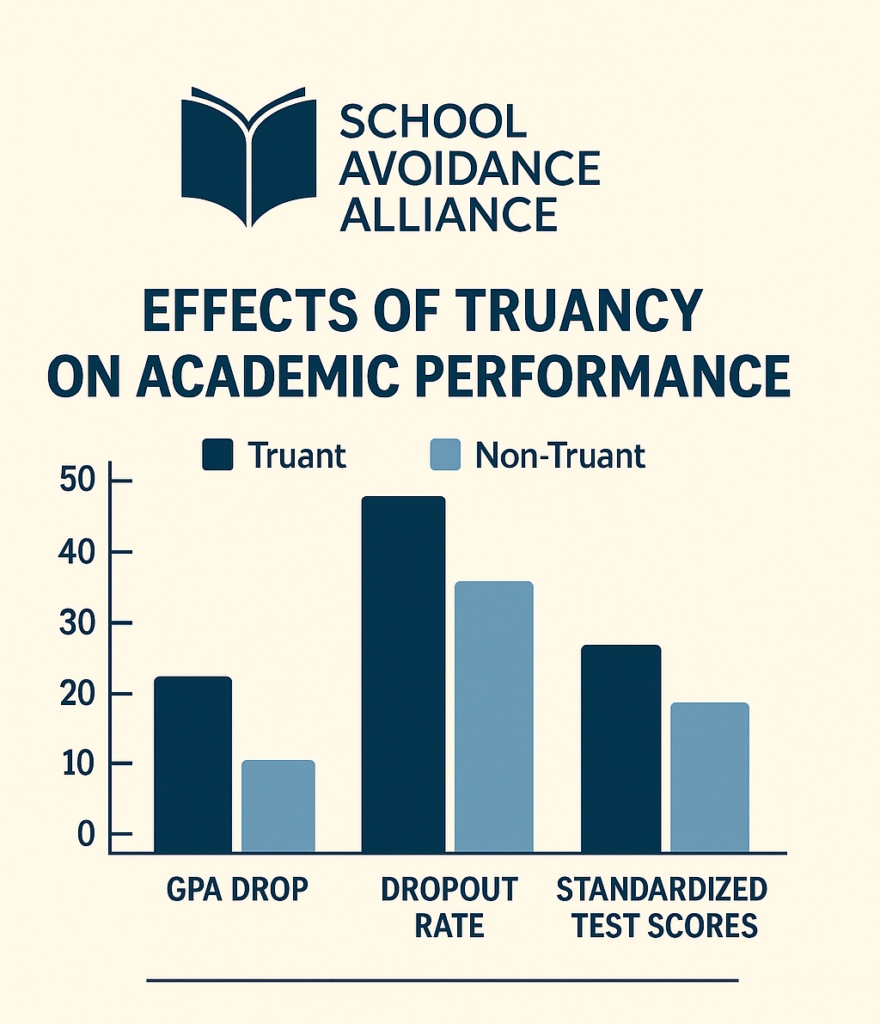
Student Engagement Strategies to Reduce Truancy
Reducing truancy starts with boosting student engagement. When students feel connected to their school community, they are far more likely to attend consistently.
Proven Student Engagement Strategies:
- Mentorship Programs
Pairing students with mentors helps build trust and accountability. - After-School Activities
Sports, music, clubs, and art programs encourage involvement and personal development. - Culturally Responsive Curriculum
Students engage more when they see their culture and identity reflected in their studies. - Positive Behavior Incentives
Recognizing good attendance and participation encourages consistent habits. - Restorative Practices
Instead of suspensions or detentions, restorative circles and mediation resolve underlying issues.
Engaged students are empowered students—and empowered students show up.
Educational Neglect: A Hidden Cause of Truancy
Educational neglect occurs when a parent or guardian fails to ensure a child attends school or receives homeschooling. While not always intentional, it often stems from:
- Poverty or housing instability
- Lack of understanding of legal requirements
- Mental health or substance abuse issues among guardians
School systems must work with child welfare agencies to identify and intervene in cases of educational neglect. Mandatory reporting and coordinated case management are crucial.
Preventing School Dropouts: A Community Responsibility
Truancy often leads to school dropouts, which can affect a student’s entire life trajectory. Preventing school dropouts involves more than just punishing absences—it means creating a safety net for vulnerable students.
Key Strategies:
- Early Warning Systems: Monitor attendance and grades to identify at-risk students.
- School-Community Partnerships: Collaborate with social services, healthcare providers, and nonprofits.
- Flexible Learning Options: Offer online classes, hybrid schedules, or alternative schools.
- Career and Technical Education (CTE): Give students practical skills and job readiness to keep them motivated.
- Family Engagement: Build trust with parents to create consistent routines and shared responsibility.
When entire communities unite to prioritize education, dropout rates plummet.
Conclusion: A Collective Approach to Combatting Truancy
Truancy is not simply about students skipping school—it’s a reflection of broader personal, familial, and societal challenges. By understanding the truancy definition, recognizing the causes, and implementing effective student engagement strategies, we can help at-risk students before they fall through the cracks.
Whether you’re an educator implementing attendance policies, a parent struggling to get your child to class, or a policymaker shaping legislation, your role in addressing truancy is critical. Together, through early intervention, compassionate support, and coordinated efforts, we can turn truants into achievers and ensure that every child receives the education they deserve.

